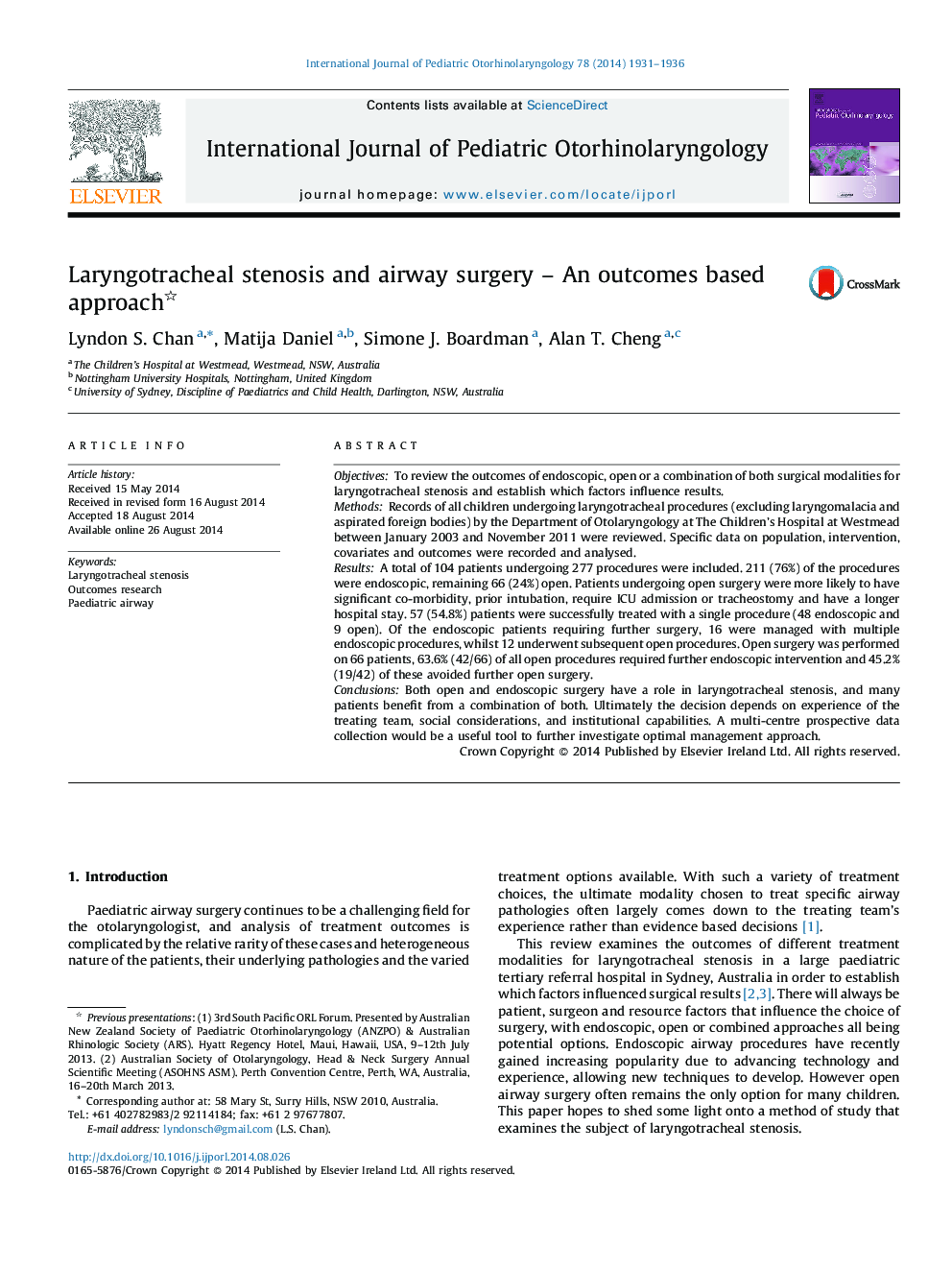| Article ID | Journal | Published Year | Pages | File Type |
|---|---|---|---|---|
| 4112239 | International Journal of Pediatric Otorhinolaryngology | 2014 | 6 Pages |
ObjectivesTo review the outcomes of endoscopic, open or a combination of both surgical modalities for laryngotracheal stenosis and establish which factors influence results.MethodsRecords of all children undergoing laryngotracheal procedures (excluding laryngomalacia and aspirated foreign bodies) by the Department of Otolaryngology at The Children's Hospital at Westmead between January 2003 and November 2011 were reviewed. Specific data on population, intervention, covariates and outcomes were recorded and analysed.ResultsA total of 104 patients undergoing 277 procedures were included. 211 (76%) of the procedures were endoscopic, remaining 66 (24%) open. Patients undergoing open surgery were more likely to have significant co-morbidity, prior intubation, require ICU admission or tracheostomy and have a longer hospital stay. 57 (54.8%) patients were successfully treated with a single procedure (48 endoscopic and 9 open). Of the endoscopic patients requiring further surgery, 16 were managed with multiple endoscopic procedures, whilst 12 underwent subsequent open procedures. Open surgery was performed on 66 patients, 63.6% (42/66) of all open procedures required further endoscopic intervention and 45.2% (19/42) of these avoided further open surgery.ConclusionsBoth open and endoscopic surgery have a role in laryngotracheal stenosis, and many patients benefit from a combination of both. Ultimately the decision depends on experience of the treating team, social considerations, and institutional capabilities. A multi-centre prospective data collection would be a useful tool to further investigate optimal management approach.
